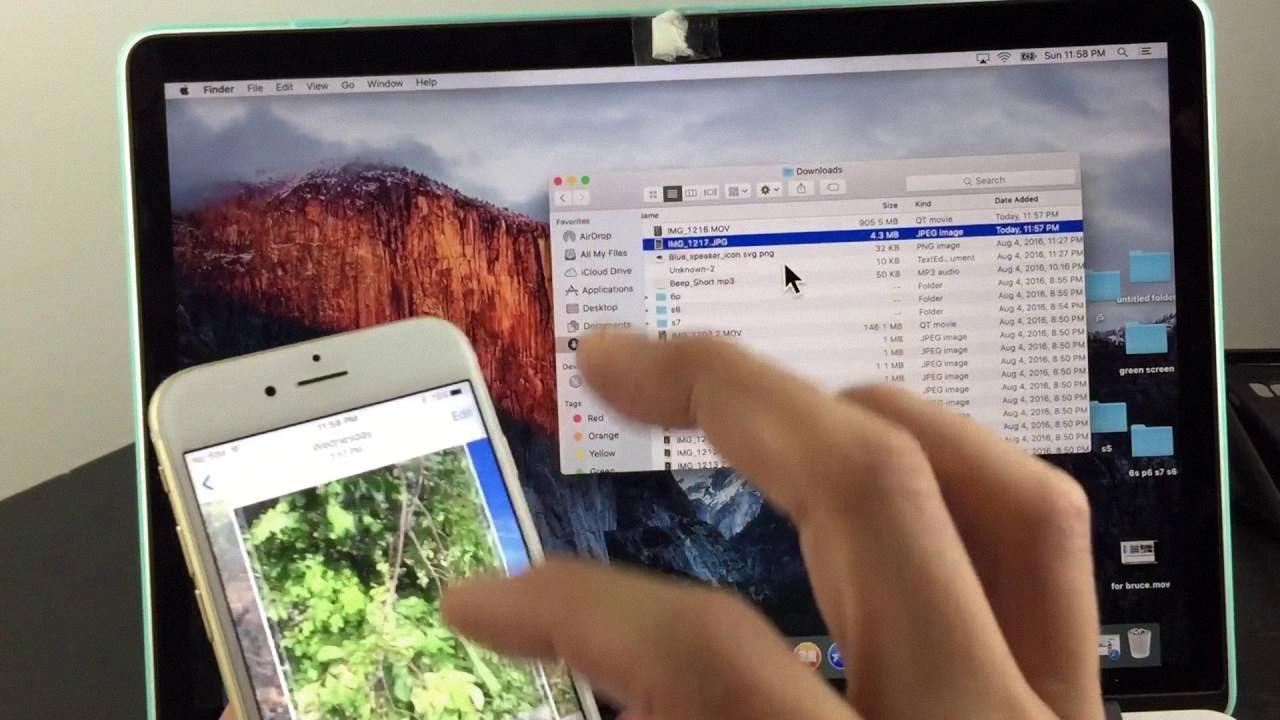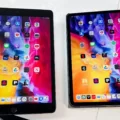The iPhone has become an integral part of our lives, serving as a powerful tool for communication, entertainment, and capturing precious moments through its high-quality camera. One common task that iPhone users often face is transferring photos from their device to a Mac computer. While the traditional method involves connecting the iPhone to the Mac using a USB cable, there is also a convenient wireless option available. In this article, we will explore how to transfer photos from an iPhone to a Mac wirelessly.
Before we delve into the wireless transfer method, let’s briefly discuss the traditional method for transferring photos using a USB cable. To transfer photos from your iPhone to your Mac using a USB cable, you need to connect your iPhone to the Mac using a compatible USB cable. Once connected, open the Photos app on your Mac, and you will see an Import screen displaying all the photos and videos on your iPhone. Simply select the photos you want to transfer and click on the Import button to transfer them to your Mac. It’s a simple and straightforward process that has been used for years.
However, if you prefer a wireless transfer method, Apple offers a feature called AirDrop that allows you to transfer files, including photos, wirelessly between Apple devices. To transfer photos from your iPhone to your Mac using AirDrop, you need to ensure that both devices are connected to the same Wi-Fi network and have AirDrop enabled.
On your iPhone, swipe up from the bottom of the screen to open the Control Center. Tap on the AirDrop icon to enable it and set it to “Contacts Only” or “Everyone” depending on your preference. On your Mac, open the Finder and click on AirDrop in the sidebar to enable it as well.
Now, select the photos you want to transfer from your iPhone. Tap on the Share button, which looks like a square with an arrow pointing upwards. In the Share menu, you will see a list of available devices nearby, including your Mac. Tap on your Mac’s name to send the photos via AirDrop.
On your Mac, you will receive an AirDrop notification with a preview of the photos. Click on the Accept button to start the transfer process. The photos will be saved in the Downloads folder on your Mac by default. You can then move them to a desired location on your computer.
It’s important to note that both devices need to be in close proximity for AirDrop to work effectively. Additionally, AirDrop requires Bluetooth and Wi-Fi to be turned on, so make sure both are enabled on your devices.
Transferring photos from an iPhone to a Mac wirelessly can be done effortlessly using Apple’s AirDrop feature. This convenient method eliminates the need for a physical connection and allows for quick and seamless transfer of photos. Whether you choose the traditional USB cable method or opt for the wireless AirDrop method, both options provide a hassle-free way to transfer your precious memories from your iPhone to your Mac.
What is the Easiest Way to Transfer Photos From iPhone to Mac?
Transferring photos becomes a hassle if iPhone pictures don’t auto-rotate.
To transfer photos from your iPhone to your Mac, follow these steps:
1. Connect your iPhone or iPad to your Mac using a USB cable.
2. Once connected, open the Photos app on your Mac.
3. In the Photos app, you should see an Import screen that displays all the photos and videos on your connected device.
4. If the Import screen doesn’t automatically appear, you can click on the name of your device in the Photos sidebar to access it.
5. On the Import screen, you can select the photos and videos you want to transfer to your Mac. You can either choose to import all of them or manually select specific ones.
6. If you want to import all the photos, simply click on the “Import All New Items” button located at the top right corner of the Import screen.
7. If you prefer to manually select photos, you can click on each individual photo to select it. Selected photos will have a blue checkmark on them. After selecting the desired photos, click on the “Import Selected” button.
8. The selected photos will now be transferred from your iPhone to your Mac. You can monitor the progress of the transfer on the Import screen.
9. Once the transfer is complete, the imported photos will be available in the Photos app on your Mac. You can organize them into albums or edit them as desired.
It’s worth noting that the Photos app on your Mac may provide additional options for importing photos, such as choosing the destination folder or applying automatic organization. You can explore these options by clicking on the “Options” button on the Import screen.
Using the Photos app to transfer photos from your iPhone to your Mac is a simple and straightforward method. It allows you to easily manage and organize your photos on your Mac, ensuring they are safely backed up and easily accessible.

How Do You Transfer Photos From Your Camera to Your Mac Wirelessly?
To transfer photos from your camera to your Mac wirelessly, you can follow these steps:
1. Ensure that a memory card is inserted into your camera and power it on.
2. On your camera, go to the settings and set the USB connection mode to either MTP (Media Transfer Protocol) or PTP (Picture Transfer Protocol). This will enable your camera to connect with your Mac.
3. Connect your camera and your Mac using a USB cable.
4. On your Mac, open Finder and navigate to the Applications folder.
5. Look for the appropriate software for your camera model and open it. This software is often provided by the manufacturer and is specifically designed for transferring media from the camera to the computer wirelessly.
6. Follow the on-screen instructions to establish a wireless connection between your camera and your Mac. This may involve selecting your camera from a list of available devices or entering a unique pairing code.
7. Once the wireless connection is established, you should be able to access the photos on your camera directly from your Mac. You can then select the photos you want to transfer and choose the option to import them to your computer.
8. Alternatively, you may also have the option to sync your camera with a specific application on your Mac, such as iPhoto or Photos. This will allow you to automatically import photos from your camera whenever it is connected wirelessly to your Mac.
By following these steps, you should be able to transfer photos from your camera to your Mac wirelessly.
Can You AirDrop From iPhone to Mac?
It is possible to AirDrop from an iPhone to a Mac as long as both devices are signed in to iCloud using the same Apple ID. AirDrop allows you to easily transfer items such as photos, videos, documents, and more between Apple devices.
To initiate the AirDrop transfer from your iPhone to your Mac, follow these steps:
1. Ensure that both your iPhone and Mac are connected to the same Wi-Fi network and have Bluetooth enabled.
2. Open the Control Center on your iPhone by swiping down from the top-right corner (for iPhone X or later) or swiping up from the bottom (for iPhone 8 or earlier).
3. Long-press or force touch the network settings card in the top-left corner of the Control Center.
4. Tap on the AirDrop icon to open the AirDrop menu.
5. In the AirDrop menu, select “Contacts Only” or “Everyone” depending on your preference. This determines who can see your device and send you AirDrop requests.
6. Open the item that you want to AirDrop, such as a photo in the Photos app.
7. Tap the Share button, which is usually represented by a square with an arrow pointing upwards.
8. From the list of available sharing options, locate and tap on your Mac’s name or icon.
9. On your Mac, you will receive an AirDrop notification in the top-right corner of the screen.
10. Click on the Accept pop-up menu within the AirDrop notification.
11. From the options presented, choose where you want to save the transferred item on your Mac, such as the Downloads folder or a specific location.
By following these steps, you can easily transfer files from your iPhone to your Mac using AirDrop. It offers a seamless way to share content between Apple devices without the need for cables or additional software.
Can You AirDrop to a Mac?
You can AirDrop files to a Mac from another Mac, iPhone, iPad, or iPod touch. AirDrop is a wireless file-sharing feature that allows you to transfer various types of content between Apple devices. It uses Bluetooth technology and Wi-Fi to establish a connection between the devices.
To AirDrop to a Mac, follow these steps:
1. Make sure both devices have AirDrop enabled. On the Mac, go to Finder and click on “Go” in the menu bar. Then select “AirDrop” from the drop-down menu. On iOS devices, swipe up from the bottom of the screen to access Control Center, and tap on the AirDrop icon to enable it.
2. On the sending device (the device you want to send files from), open the app or location where the content you want to share is located. For example, if you want to send a photo, open the Photos app.
3. Select the file or files you want to send. In most apps, you can do this by tapping on the share button (usually indicated by a square with an arrow pointing out) and selecting the AirDrop option. In Finder on the Mac, you can drag and drop files directly onto the AirDrop window.
4. On the receiving Mac, you should see an AirDrop window open automatically. The sending device should appear as an icon in this window. Alternatively, you can open Finder and select AirDrop from the sidebar.
5. Drag and drop the files onto the receiving device’s icon in the AirDrop window. You can also click on the recipient’s icon and select “Accept” when prompted to receive the files.
6. The files will begin transferring. You may see a progress bar indicating the transfer status. Once the transfer is complete, you can access the files on the receiving Mac.
Note: AirDrop requires both devices to be within Bluetooth and Wi-Fi range of each other. It is also important to ensure that both devices are using the same Apple ID and have AirDrop enabled.
Benefits of using AirDrop to transfer files include its speed, ease of use, and secure encryption. It eliminates the need for cables or other external devices, making it a convenient option for quickly sharing files between Apple devices.
Conclusion
The iPhone is a versatile and powerful device that offers a wide range of features and functionalities. From its stunning display and advanced camera capabilities to its seamless integration with other Apple devices, the iPhone provides an exceptional user experience.
One of the standout features of the iPhone is its operating system, iOS. With regular updates and a user-friendly interface, iOS ensures that iPhone users have access to the latest innovations and improvements. The App Store, with its vast selection of applications, further enhances the iPhone experience by offering a wide range of productivity, entertainment, and utility apps.
The iPhone’s camera capabilities are truly impressive. With each new model, Apple continues to push the boundaries of mobile photography, introducing features such as Portrait mode, Night mode, and advanced video recording capabilities. Whether you’re a professional photographer or just love capturing moments on the go, the iPhone’s camera is sure to impress.
Another key advantage of the iPhone is its seamless integration with other Apple devices. Through features like iCloud and AirDrop, users can easily sync their data, share files, and transfer information between their iPhone, Mac, iPad, and other Apple devices. This level of connectivity and convenience makes the iPhone an excellent choice for individuals who are already invested in the Apple ecosystem.
In addition to its impressive hardware and software features, the iPhone also prioritizes user privacy and security. With features like Face ID and Touch ID, users can ensure that their personal information remains protected. Apple’s commitment to privacy is further highlighted by its privacy-focused approach to data collection and its dedication to keeping user information secure.
The iPhone offers a compelling combination of design, performance, and features that make it a top choice for mobile users. Whether you’re a technology enthusiast, a creative professional, or someone who simply wants a reliable and intuitive smartphone, the iPhone delivers on all fronts. With its cutting-edge technology, seamless integration, and commitment to privacy, the iPhone continues to set the standard for mobile devices.








